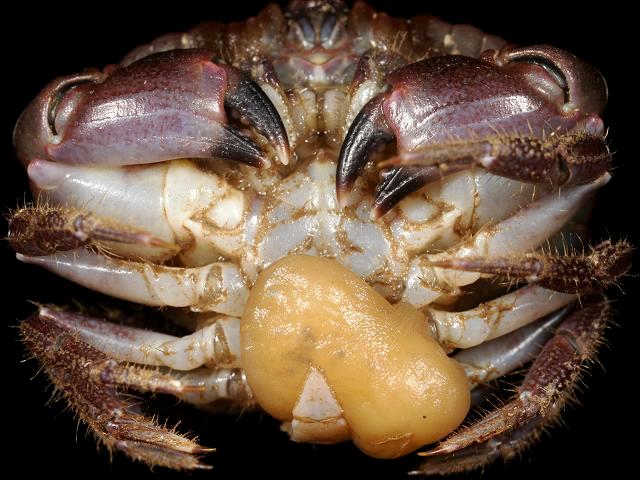
APHOTOMARINE
An educational resource dedicated mainly to the photography
and diversity of marine life that can be found in coastal waters
and intertidal areas of Great Britain and Ireland by David Fenwick.

Sacculina inflata Leuckart, 1859 - A parasitic barnacle on Common edible crab (Barnacle images)
Scroll down and rollover titles to change screen image or click on title to view image.
Parasitic barnacle
Sacculina inflata
- on Cancer pagurus 1
Sacculina inflata
- on Cancer pagurus 1
Parasitic barnacle
Sacculina inflata
- on Cancer pagurus 2
Parasitic barnacle
Sacculina inflata
- on Cancer pagurus 3
Parasitic barnacle
Sacculina inflata
- on Cancer pagurus 4
Parasitic barnacle
Sacculina inflata
- on Cancer pagurus 5
Parasitic barnacle
Sacculina inflata
- barnacle detached 1
Parasitic barnacle
Sacculina inflata
- barnacle aperture 1
Parasitic barnacle
Sacculina inflata
- barnacle aperture 2
Parasitic barnacle
Sacculina inflata
- barnacle aperture with lobes 1
Parasitic barnacle
Sacculina inflata
- with 1.0mm division rule 1
Parasitic barnacle
Sacculina inflata
- fixed and dissected 1
Parasitic barnacle
Sacculina inflata
- fixed and dissected 2
Parasitic barnacle
Sacculina inflata
- fixed and dissected 3
Parasitic barnacle
Sacculina inflata
- fixed and dissected 4
Parasitic barnacle
Sacculina inflata
- eggs under microscope 1
The Common edible crab and parasitic barnacle seen above was found by Rob Durrant, on the lowershore at Lee Bay, near Ilfracombe, North Devon. 18.09.16.
The specimen was fixed in 100% ethanol and dissected a few days after finding. The barnacle appears to contain an egg mass. I am not sure if this is the egg mass of a female barnacle or of a parasite of the parasite.
Identification of this species is based on the paper Diseases of the European edible crab (Cancer pagurus): a review. – ICES Journal of Marine Science, 65: 1578–1592. Grant D. Stentiford of the European Community Reference Laboratory for Crustacean Diseases, Centre for Environment, Fisheries and Aquaculture Science, Weymouth, Dorset, England.
Sacculina triangularis is now a synonym of Sacculina inflata, ref. WoRMS.

The main objective of this website is in furthering environmental awareness and education through the medium of photography. To increase awareness and access to the wildlife of the region and help
people find and identify it. Sometimes the difference between species is obvious but many species can only be determined by observing microscopic characteristics that are specific to any one species.